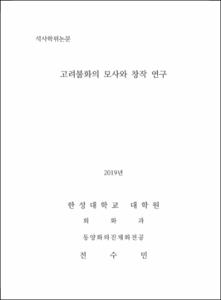고려불화의 모사와 창작 연구
= Study on copy and creation of Goryeo Buddhist Paintings
- Files in This Item:
-
-
Download
 200000217081.pdf
기타 데이터 / 126.15 MB / Adobe PDF
200000217081.pdf
기타 데이터 / 126.15 MB / Adobe PDF
-
Items in Repository are protected by copyright, with all rights reserved, unless otherwise indicated.